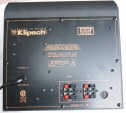

| |
Copyright
© 2001 Cooler Xtreme. All Rights Reserved. |
| |
| |
| |
Cooler Xtreme : Audio / Sound : Klipsch ProMedia 4.1 | |



| Total Harmonic Distortion: (THD) Harmonic Distortion is a means for measuring Nonlinear Distortion. Nonlinear distortion is a form of signal processing that creates signals at frequencies that are not necessarily present in the input. It contrasts with linear distortion, which is a form of error that creates no new frequencies beyond those that are present in the input signal. Linear Distortion changes the relationship of the size and timing of the frequencies that compose the input signal. Linear and Nonlinear distortion are directly based on frequencies present in the input signal. Noise is a form of error that is not as directly related to the input signal. You can read more about THD at PCAVTECH.com |



